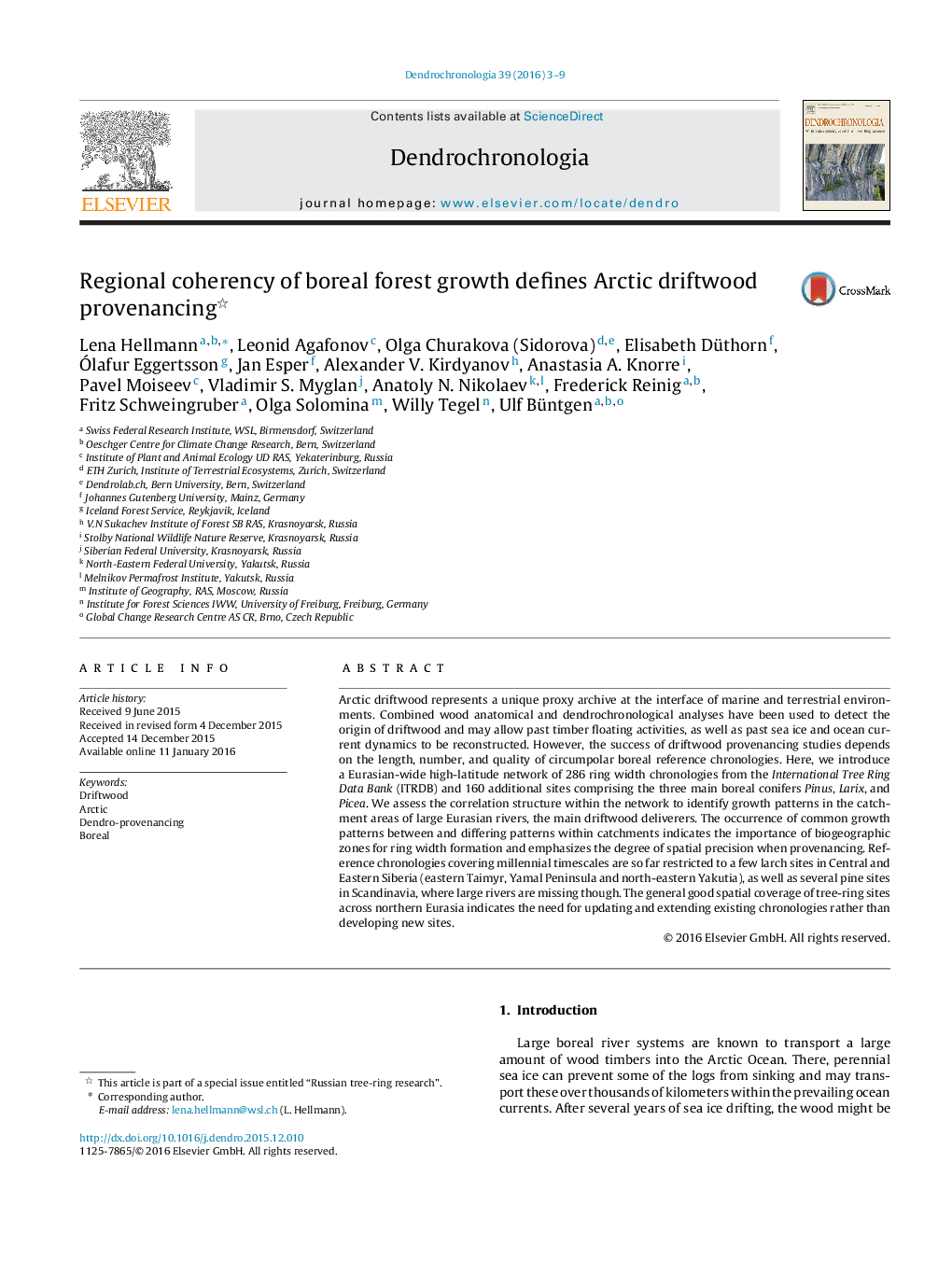| Article ID | Journal | Published Year | Pages | File Type |
|---|---|---|---|---|
| 85565 | Dendrochronologia | 2016 | 7 Pages |
Arctic driftwood represents a unique proxy archive at the interface of marine and terrestrial environments. Combined wood anatomical and dendrochronological analyses have been used to detect the origin of driftwood and may allow past timber floating activities, as well as past sea ice and ocean current dynamics to be reconstructed. However, the success of driftwood provenancing studies depends on the length, number, and quality of circumpolar boreal reference chronologies. Here, we introduce a Eurasian-wide high-latitude network of 286 ring width chronologies from the International Tree Ring Data Bank (ITRDB) and 160 additional sites comprising the three main boreal conifers Pinus, Larix, and Picea. We assess the correlation structure within the network to identify growth patterns in the catchment areas of large Eurasian rivers, the main driftwood deliverers. The occurrence of common growth patterns between and differing patterns within catchments indicates the importance of biogeographic zones for ring width formation and emphasizes the degree of spatial precision when provenancing. Reference chronologies covering millennial timescales are so far restricted to a few larch sites in Central and Eastern Siberia (eastern Taimyr, Yamal Peninsula and north-eastern Yakutia), as well as several pine sites in Scandinavia, where large rivers are missing though. The general good spatial coverage of tree-ring sites across northern Eurasia indicates the need for updating and extending existing chronologies rather than developing new sites.
